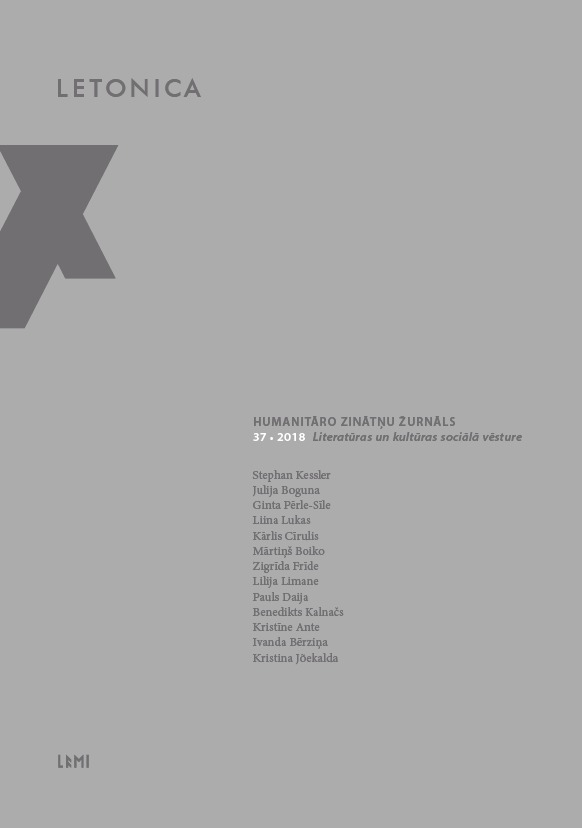Report on Georg Mancelius’s German-Latvian Ten Conversations (1638)
Report on Georg Mancelius’s German-Latvian Ten Conversations (1638)
Author(s): Stephan KesslerSubject(s): History, Language and Literature Studies, Literary Texts, Foreign languages learning, Baltic Languages
Published by: Latvijas Universitātes Literatūras, folkloras un mākslas institūts
Keywords: Georg Mancelius; Phraseologia Lettica; research report; Jan Amos Comenius; Erasmus of Rotterdam
Summary/Abstract: The article is about Georg Mancelius’s (1593–1654) book Phraseologia Lettica (1638), in particular about its second part called Ten Conversations. Research on the Conversations started late for the first edition of Phraseologia published in 1929 was incomplete. Starting with Arturs Ozols’s 1965 monograph about Old Latvian in which Ozols deals with Mancelius’s role in the genesis of modern standard Latvian, the research report considers contributions upon the Conversations until 2015. For a long period only linguists were interested in Phraseologia Lettica; in 1992, Jānis Krēsliņš was the first who presented Mancelius as both a scholar and a preacher. After remarking on the audience of the Ten Conversations a synopsis of Mancelius’s Phraseologia Lettica is given. Here Mancelius’s dialogues are divided up into three topic areas: (i) a travelling gentleman talks to the host about a pub and a coachman; (ii) the dialogues VI–IX address work in the country where a gentleman talks to farmers to organise their work; at last, (iii) two farmers are the participants in dialogue X – one of them previously lived in Livonia and praises the area so much that the other asks him why he went back to Courland. Mancelius’s uncertain relationship with two great minds in Pedagogics at that time, i.e. with John Amos Comenius (1592–1670) and Erasmus of Rotterdam (1466–1536), is discussed by comparing the structures of respective works of Mancelius, Comenius, and Erasmus in the final paragraphs. With regard to the terminus ante quem of 1638, when Mancelius published his Phraseologia Lettica only two of Comenius’ school books had come into the world – these were the more famous Janua linguarum reserata in 1631, and the less known Vestibulum latinae linguae in 1633. However, Mancelius seems to have focused on Erasmus’s work Colloquia familiaria printed in various editions between 1518 and 1533. Many authorities from the 16th and 17th centuries assigned Erasmus’s work to be a set book in the schools ruled by them. Consequently, it could be a question for further research to find out whether Erasmus’s Colloquia familiaria was used in Mitau or Riga, where Mancelius had been a pupil at the local grammar schools in the first decade of the 17th century.
Journal: Letonica
- Issue Year: 2018
- Issue No: 37
- Page Range: 7-20
- Page Count: 14
- Language: English

